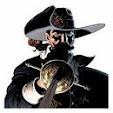We do not know when the first artillery was placed at Cartagena. It was probably in the late fifteenth century, during the reign of Ferdinand and Isabella, and it would have been installed in the castle which was already there.
In the sixteenth century, during the reigns of Charles I and his son, Philip II, the military and defensive role of Cartagena was much enhanced. The base of royal galleys that fought against Berber and Turkish pirates was established. The walls were strengthened and new coastal fortifications such as Fort Christmas built.
The military importance of Cartagena continued increasing during the seventeenth century, despite several epidemics that ravaged the town. It became the main military base for the Mediterranean policy of the kings of Spain, especially for its relationship with its possessions in Italy.
In the eighteenth century, after the War of Spanish Succession (1701-1714) and despite having supported the House of Austria, Cartagena experienced a revival and growth with Philip V of Bourbon. In 1726 it was designated as the capital of the Mediterranean Maritime Department. In the following years the Arsenal and various castles that still surround the town were built.
The strongholds that protected the city and the ships built and repaired at the Arsenal required large amounts of cannons. But, where was this artillery and its ammunition made?
 |
| You can find very instructive explanations about the evolution of artillery and the fortifications of Cartagena throughout the last five centuries at the Cartagena’s Military Historical Museum. |
The development of artillery in the fifteenth century, the creation of new empires in the sixteenth, and the need for controlling the seas to defend them, led to an arms race between the European powers.
Iron cannons could not be manufactured at forges because it was not possible to reach the melting temperature of iron there. Only bombards were made, based on small parts, staves, later joined by strings. The production of bronze cannons, much lighter and stronger, was very expensive. The growing demand for artillery, especially for ships, forced a technological revolution based on the manufacture of cast iron cannons in blast furnaces.
The first two blast furnaces in Spain were built in 1618 by the Liege born industrial businessman Jean Curtius (Juan Curcio) in Liérganes, near La Cavada village. Nearby there were abundant forests to make charcoal, iron ore mines, the Miera river with abundant and regular flow, ideal for transporting logs and for getting energy, refractory stone quarries, sand and clay for the moulds, shipyards where ships had to be equipped with cannons and a large bay with a harbour to send the remaining production.
Many smelters with their families were brought from Flanders and they settled in the region. Nowadays, Flemish surnames are very common in the Community of Cantabria.
In 1622 a Royal Decree confirmed a number of benefits so that Curcio's company could finally begin work. It was a private company under concession by the state.
Cumulative investment and delayed orders drove to Curcio almost to bankrupt. But his able successor in the management of the facilities, the Luxembourg born Jorge de Bande, managed to get high production and profitability from 1635.
Technological improvements were introduced and cannons made in Liérganes and La Cavada became the best in the world. The weight was down by 30% compared to those manufactured in other countries. Moreover, these guns did not blast during use because before this happened, cracks warning of the risk appeared.
The manufacturing facilities waxed and waned depending on the fate of the many wars which Spain held with other European nations and on the economic situation.
After the War of Spanish Succession (1701-1714), such as it happened to Cartagena, these factories went through another long period of great expansion.
The descendants of Jorge de Bande continued directing the premises at Liérganes and La Cavada, until in 1759 Charles III revoked the granted benefits. The smelter was seized and expropriated and it became the Royal Factory in 1763. The Crown compensated the owners with a significant amount of money.
 |
| Cannon exhibited at the Museum of the Royal Artillery Factory at La Cavada. This small but lovely museum keeps alive the memory of what was the most important artillery factory in Spain. |
The decline of the Royal Artillery Factory followed that of the Spanish Navy after the Battle of Trafalgar (1805). The Peninsular War (1808-1814) exacerbated this decline. Once the war was over, it was attempted to melt guns again but for different reasons, mainly logistical, with little success.
A failed attempt of privatization, the Carlist war and a great flood caused the factory at La Cavada to be closed permanently in 1835. This was the end of more than two centuries of industrial activity, often with leading technology.
Many of the guns from strongholds in the Philippines, throughout America, in Spain and, of course, at Cartagena, that still bear witness to the history of the Spanish empire, were melted in Liérganes and La Cavada. In the bottom of the sea, in numerous ship wrecks, lie many of the over 26,000 cannons, along with ammunition and other military and civilian elements, made in Cantabria.
References and links
La Real Fábrica de Artillería de La Cavada. José Manuel Maza Uslé. Ediciones Estudio. Santander 2007
Orígenes y fundación de las fábricas de Liérganes y La Cavada. José Manuel Maza Uslé. Revista ASCAGEN Nº1 Primavera 2009
Real Fábrica de Artillería de La Cavada (Wikipedia)
Real Fábrica de Artillería de La Cavada (TV Documentary)
Real Fábrica de Artillería de La Cavada (Museum website)
El Arsenal de Cartagena (Spanish)
The Arsenal of Cartagena (English)
Museo Histórico Militar de Cartagena / Cartagena's Military Historical Museum
Museo Histórico Militar de Cartagena (2) / Cartagena’s Military Historical Museum (2)
El Museo Naval de Cartagena / Naval Museum at Cartagena
El Museo Naval de Cartagena (2) / Naval Museum at Cartagena (2)










No hay comentarios:
Publicar un comentario